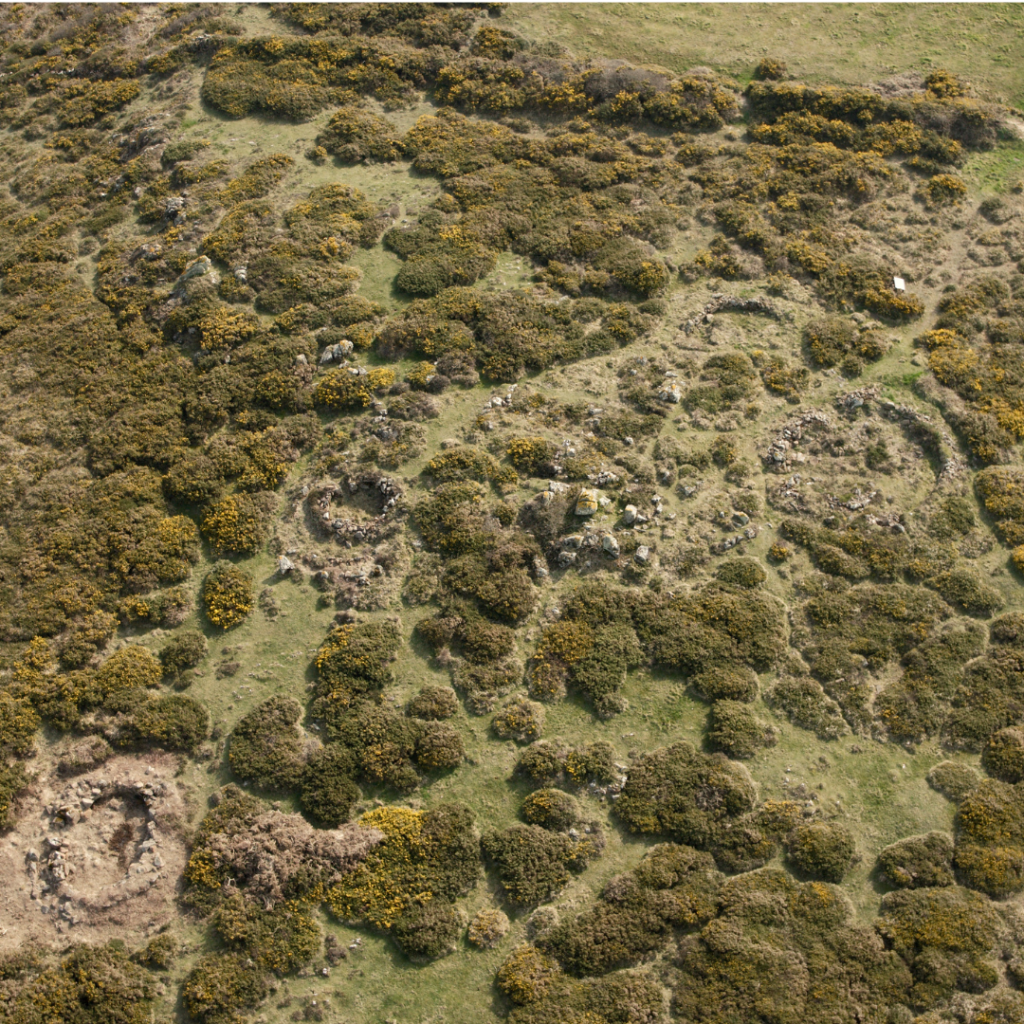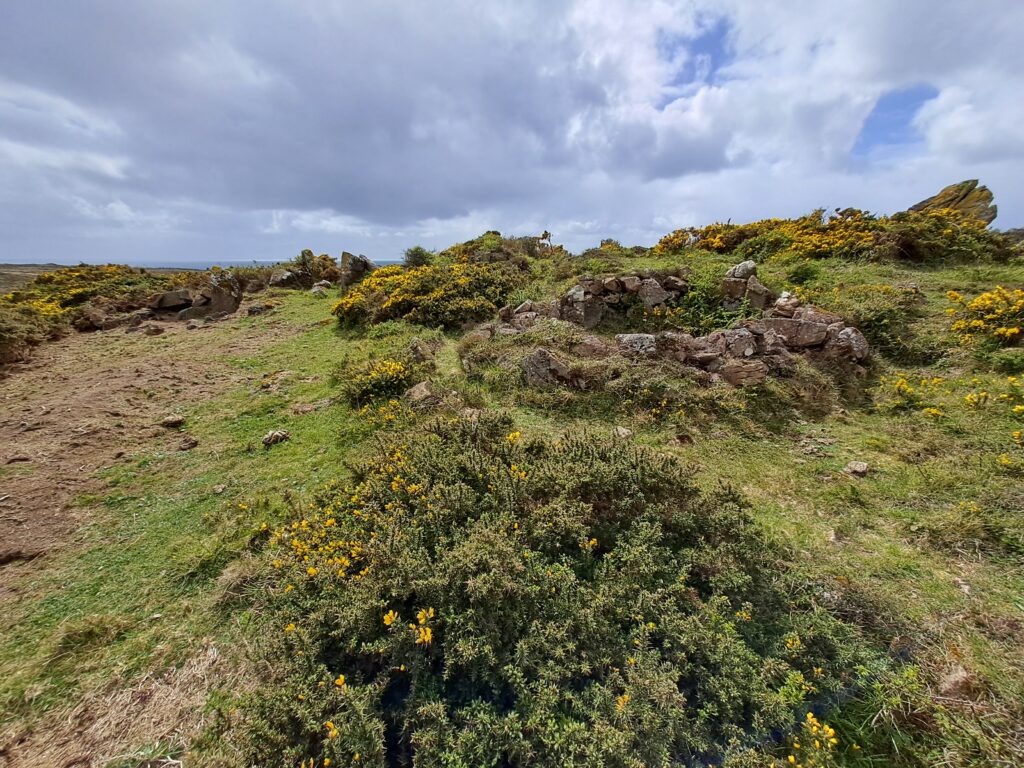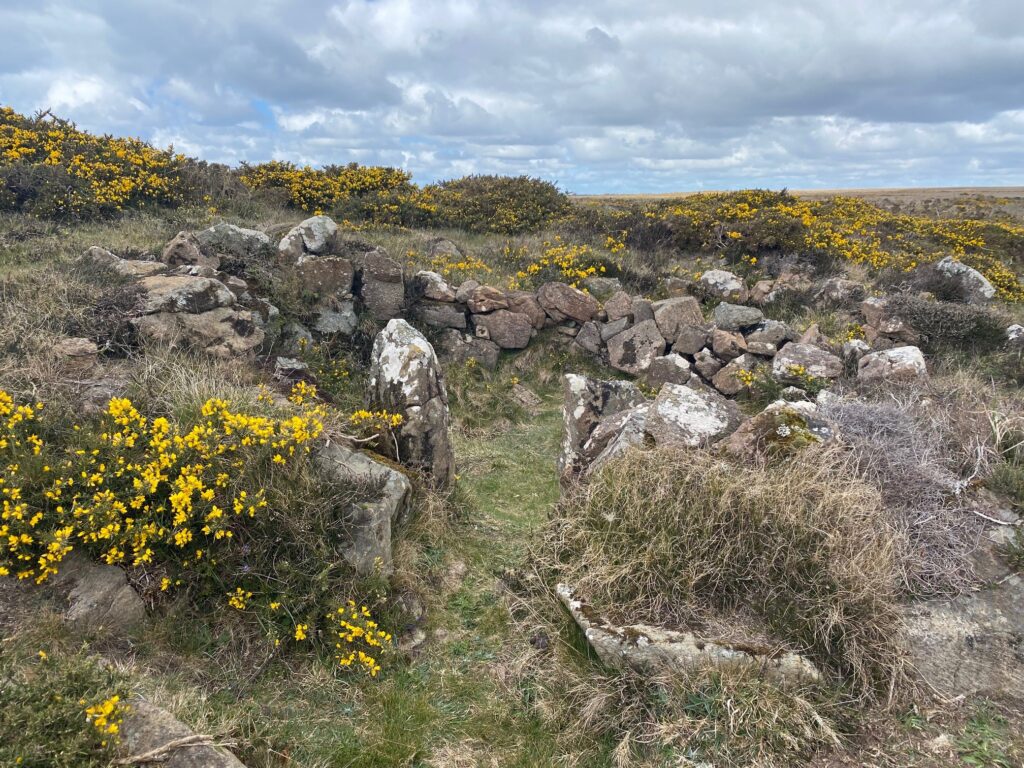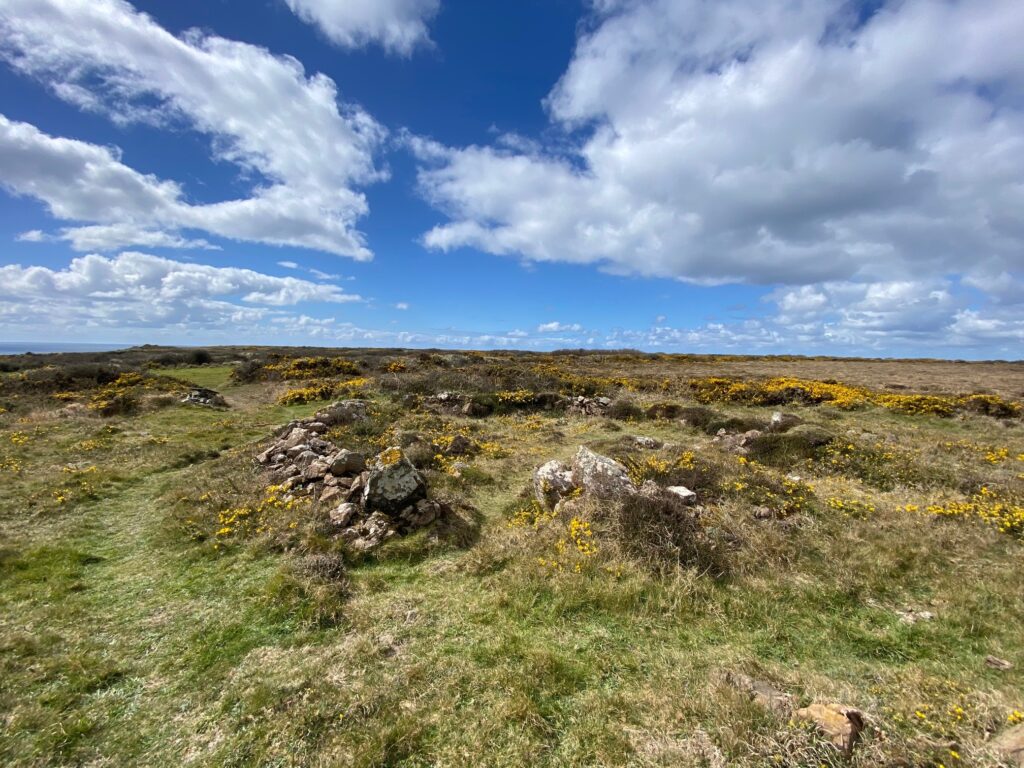
Beef farmers are invited to join the OPTICK Project
To help manage tick-borne risks.
Sara Tipler
Welcome to Kynance Gate, a hidden gem in Cornwall’s wild landscape! This ancient gateway dates back to the 18th century and once served as an important entry point to Kynance Downs, leading travellers through stunning coastal views and historic paths. While the gate itself has weathered many years, it still stands as a reminder of the past, connecting visitors with Cornwall’s rich heritage and the breathtaking natural beauty surrounding it. Let’s explore its story!
8000-3500 BC (Mesolithic)
Lived in the area, leaving behind flint tools.
1200 BC (Middle Bronze Age)
There were used seasonally for grazing and possibly metalwork.
500 BC - 100 AD (Iron Age)
With larger oval houses built.
Medieval Period
Its exact date remains unclear.
1896 AD
led to the partial excavation of two roundhouses by the Royal Institution of Cornwall.
1950s
By a schoolboy prompted 11 seasons of excavation.
1956 AD
Kynance Gate was designated as a Scheduled Monument.
1960s
Some finds were displayed at Helston Museum of Cornish Life.
1970s
The site became part of the Lizard National Nature Reserve, managed by Natural England.
Kynance Gate has been an important landmark in Cornwall for centuries. In the 1700s, it served as a boundary marker between local parishes and a gateway to Kynance Downs, a vast area of grazing land. Over time, it became a key route for farmers and travellers. By the 19th century, the gate played a role in guiding people across the rugged landscape. Today, it remains a symbol of Cornwall’s agricultural past and its long-standing connection to the land.
Kynance Gate is a remarkable example of prehistoric settlement in Cornwall, offering insights into both the Bronze and Iron Ages. Initially occupied around 1200 BC, it served as a seasonal hub where people grazed livestock and engaged in various crafts, including metalworking and spinning. After a period of abandonment, it was reoccupied during the Iron Age (500 BC – AD 100), with larger, oval houses built on the site.
The site’s rediscovery in 1896 sparked archaeological interest, leading to excavations that uncovered thousands of pottery fragments and artefacts. These finds reveal a thriving community and give us a window into ancient industries and everyday life. The settlement’s significance lies in its dual-phase occupation, highlighting changes in living patterns over centuries and its role in Cornwall’s agricultural past.
Panoramas
This panoramic view captures the sweeping landscape surrounding Kynance Gate, a site rich with history. From this vantage point, you can see where ancient roundhouses once stood, blending into the wild heathland that stretches out towards the dramatic Cornish coastline.

This panoramic shot highlights the rugged terrain around Kynance Gate, where patches of green meet rocky outcrops. The landscape reveals subtle traces of the prehistoric settlement, blending into the natural surroundings that have sheltered this ancient site for centuries.

Gallery









Video Gallery
Iron Age hut circle at Kynance Gate, Kynance Cove, Lizard, Cornwall.
Protecting Cornwall’s natural landscapes is no easy task. With such a diverse range of ecosystems, from windswept cliffs to sheltered valleys, it takes a lot of work to ensure that wildlife and plants can thrive. Conservation teams regularly monitor these areas, repairing damaged habitats and keeping an eye on endangered species. However, challenges like climate change, pollution and the spread of invasive species make this work even harder. As the weather patterns shift, some animals and plants struggle to survive in changing conditions.
Human activity can also put pressure on the environment, so local communities and visitors are encouraged to play their part by sticking to marked paths and avoiding disturbing wildlife. Protecting these precious ecosystems is a shared responsibility, requiring constant care and attention.

Visitors play a big role in protecting Cornwall’s beautiful landscapes. By staying on marked paths, you help prevent damage to delicate plants and wildlife habitats. Always take your rubbish with you, as litter can harm animals and spoil the natural beauty. If you’re lucky enough to spot wildlife, watch from a distance and avoid disturbing them. Every small action helps keep these special places thriving for future generations to enjoy and explore.

Cornwall’s landscapes are teeming with fascinating ecological features. The region is known for its rugged moorlands, peaceful wetlands and coastal cliffs, each supporting a unique variety of wildlife. One key feature is the heathland, where tough plants like heather and gorse thrive. These provide shelter and food for many animals, including insects and birds.
Wetlands are another important habitat, attracting species like the rare marsh fritillary butterfly. Coastal cliffs, meanwhile, offer nesting sites for seabirds, including Cornwall’s iconic chough. Each of these features plays a vital role in the ecosystem.


Cornwall’s rich landscapes are home to a variety of plants and animals. The rugged heathlands are brightened by purple heather and yellow gorse, while wildflowers like bluebells and foxgloves can be spotted in sheltered spots.
In the skies, you might see buzzards or hear the distinctive call of the Cornish chough, a rare bird with red legs and a curved beak. On the ground, keep an eye out for creatures like rabbits, butterflies, and even the occasional badger. Each species plays an important role in keeping the ecosystem balanced.
Grid Ref: SW 68681 13896
Find with what3words: sheepish.packets.weekday
Plan your visit with essential details on transport and parking options, available facilities, route descriptions and accessibility information to ensure a comfortable and enjoyable experience at any of our historical monuments.
When enjoying the countryside, it’s important to follow the Countryside Code to protect nature and preserve its beauty for everyone. This includes simple, respectful actions like not littering—always take your rubbish home or dispose of it properly in bins. Stick to designated paths to avoid damaging crops or wildlife habitats, and keep gates and property as you find them, whether open or closed. Be mindful of livestock and wildlife by keeping dogs under control and not disturbing animals. By following these guidelines, you contribute to the protection of the environment and ensure that others can enjoy the countryside as well.
Kynance Gate is accessible via a public footpath, but visitors should be prepared for uneven terrain and a short walk from the nearest car park. Due to the rural nature of the site, it is not suitable for wheelchairs or mobility scooters. The area is part of a coastal heathland, so weather conditions can change quickly—appropriate footwear and clothing are essential. While there are no facilities directly at the site, nearby amenities at Kynance Cove include a café, public toilets, and parking, though spaces fill quickly during peak times.
There are no facilities directly at Kynance Gate, as it is a natural and historic site. However, nearby Kynance Cove offers several amenities to enhance your visit, including a café serving refreshments, public toilets, and a car park. Please note that the car park can fill up quickly during busy periods, so early arrival is recommended. Be sure to take advantage of these nearby facilities before exploring the site.

you can play a part in preserving its beauty and history for future generations. Volunteering opportunities range from helping with conservation efforts to assisting with educational programmes and community events. Whether you have a passion for nature, history, or simply love the outdoors, there’s a way for you to contribute. Join us and make a difference while connecting with others who share your enthusiasm for Cornwall’s heritage. Contact us to find out more about how you can get involved!

Cornwall National Landscape is a non-profit organisation that conserves the unique landscapes, wildlife, and cultural heritage of Cornwall. Volunteering for the protected landscape provides a rewarding experience of giving back to the community and preserving the Cornwall's natural beauty.

Discover a wealth of knowledge in our Resources section, where you can download detailed research documents, reports, and source material compiled by our archaeology team to enhance your understanding of the site.
